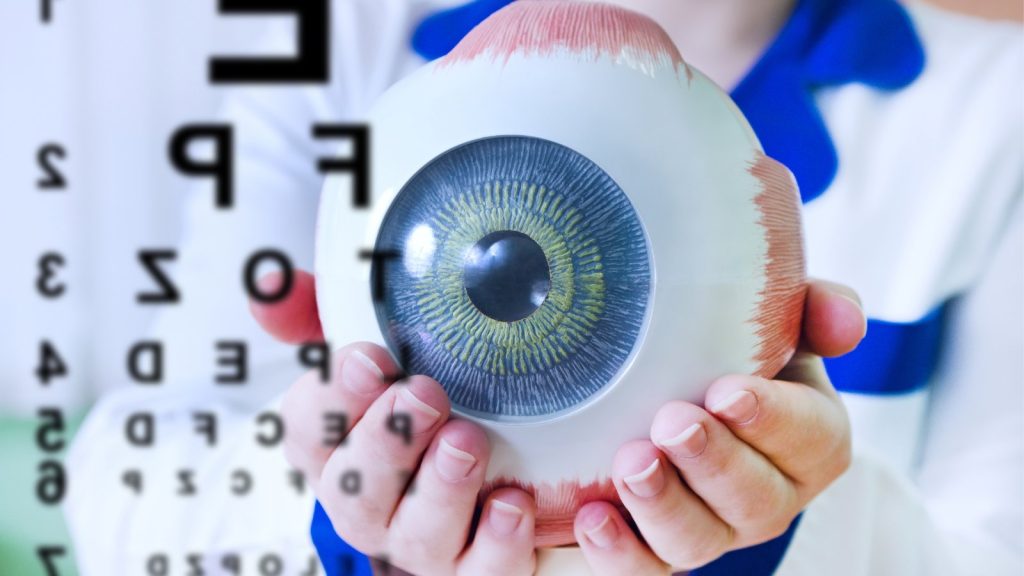Checking Out the Cutting-Edge Technologies Used for Vision Correction
In the ever-evolving landscape of vision modification technologies, a world where innovation and precision converge, a myriad of advanced innovations have reshaped the possibilities for boosting aesthetic acuity. From the detailed world of innovative laser procedures to the world of expert system applications and gene treatment breakthroughs, the area remains to press boundaries and redefine what was once believed to be unattainable. With each development comes the prospective to change how we view and attend to vision-related obstacles, offering a tantalizing glance right into a future where clarity and precision preponderate.
Advanced Laser Treatments

Another advanced laser procedure getting appeal is PRK (Photorefractive Keratectomy) This strategy involves removing the outer layer of the cornea before reshaping it with a laser. While the recovery time for PRK is longer compared to LASIK, it can be a better choice for individuals with slim corneas or various other corneal abnormalities. Both LASIK and PRK have high success prices in boosting vision and are thought about risk-free and trustworthy techniques for vision modification.

Implantable Gadgets Technology
Technologies in implantable tools are improving the landscape of vision adjustment, offering new opportunities for individuals seeking permanent options to refractive mistakes. These sophisticated tools, such as phakic intraocular lenses (IOLs) and implantable collamer lenses (ICLs), are designed to fix a broad variety of refractive mistakes, consisting of nearsightedness, hyperopia, and astigmatism. Unlike standard glasses or call lenses, implantable tools give an even more irreversible remedy by being positioned inside the eye to deal with vision.

Wavefront Technology Enhancements
The development of wavefront innovation in vision modification has actually changed the accuracy and customization of refractive procedures. By using sophisticated wavefront sensing units, this innovation permits for a thorough evaluation of the eye's one-of-a-kind aberrations, making it possible for eye doctors to customize treatments with unprecedented precision. Wavefront-guided LASIK, as an example, surpasses traditional methods by addressing not only usual refractive mistakes like nearsightedness, farsightedness, and astigmatism yet additionally higher-order aberrations that can influence aesthetic high quality.
Additionally, constant innovations in wavefront technology have actually led to boosted diagnostic capacities, allowing for a lot more precise pre-operative examinations and post-operative analyses to keep track of the efficiency of the treatment. In general, these improvements in wavefront technology have dramatically read what he said contributed to the refinement and performance of vision correction procedures, offering people a greater degree of aesthetic acuity and quality post-treatment.
Artificial Intelligence Applications
With the development of wavefront technology in vision adjustment paving the method for tailored treatments, the combination of fabricated knowledge applications is currently positioned to additional increase accuracy and efficiency in refractive procedures. Expert system (AI) brings a brand-new degree of sophistication to the field by analyzing large amounts of data to improve decision-making procedures during vision adjustment surgical treatments. AI formulas can help ophthalmologists in pre-operative planning by anticipating the optimum therapy criteria based upon specific client information, such as corneal density, refractive error, and various other appropriate factors. Throughout the procedure, AI can dynamically adjust therapy parameters in real-time, making best use of the precision of the correction. Additionally, post-operative tracking and change can likewise take advantage of AI applications, guaranteeing much better outcomes and decreased risks of issues. By leveraging AI in vision modification procedures, eye doctors can offer people personalized therapies that are not only extra accurate yet likewise customized to their distinct aesthetic needs, inevitably resulting in boosted client satisfaction and visual end results.
Gene Treatment Developments
Recent improvements in gene therapy have ushered in a brand-new era of accuracy medication, transforming the landscape of clinical therapies. In the world of vision correction, gene therapy advancements use encouraging remedies for various hereditary eye disorders. By targeting specific article genes accountable for conditions like retinitis pigmentosa, Leber congenital amaurosis, and other genetic retinal conditions, genetics treatment aims to attend to the origin of these problems at a molecular degree.
One significant development in gene therapy for vision improvement is Luxturna, accepted by the FDA in 2017. Luxturna is an introducing gene therapy treatment for people with acquired retinal illness triggered by mutations in the RPE65 genetics. With the delivery of a functional duplicate of the RPE65 genetics into retinal cells, Luxturna has actually revealed considerable improvements in vision for patients with these hereditary problems.
As research in gene treatment continues to development, the capacity for customized therapies for a variety of genetic eye problems expands significantly, providing wish for enhanced vision results and lifestyle for afflicted individuals.
Conclusion
To conclude, the area of vision adjustment is constantly progressing with using cutting-edge technologies such as sophisticated laser procedures, implantable tools, wavefront innovation, expert system, and genetics therapy. retina service near me. These technologies have revolutionized the means vision issues are resolved, providing even more precise and efficient solutions for people. As innovation proceeds to development, we can expect a More Help lot more developments in the future that will even more boost the quality of vision correction therapies